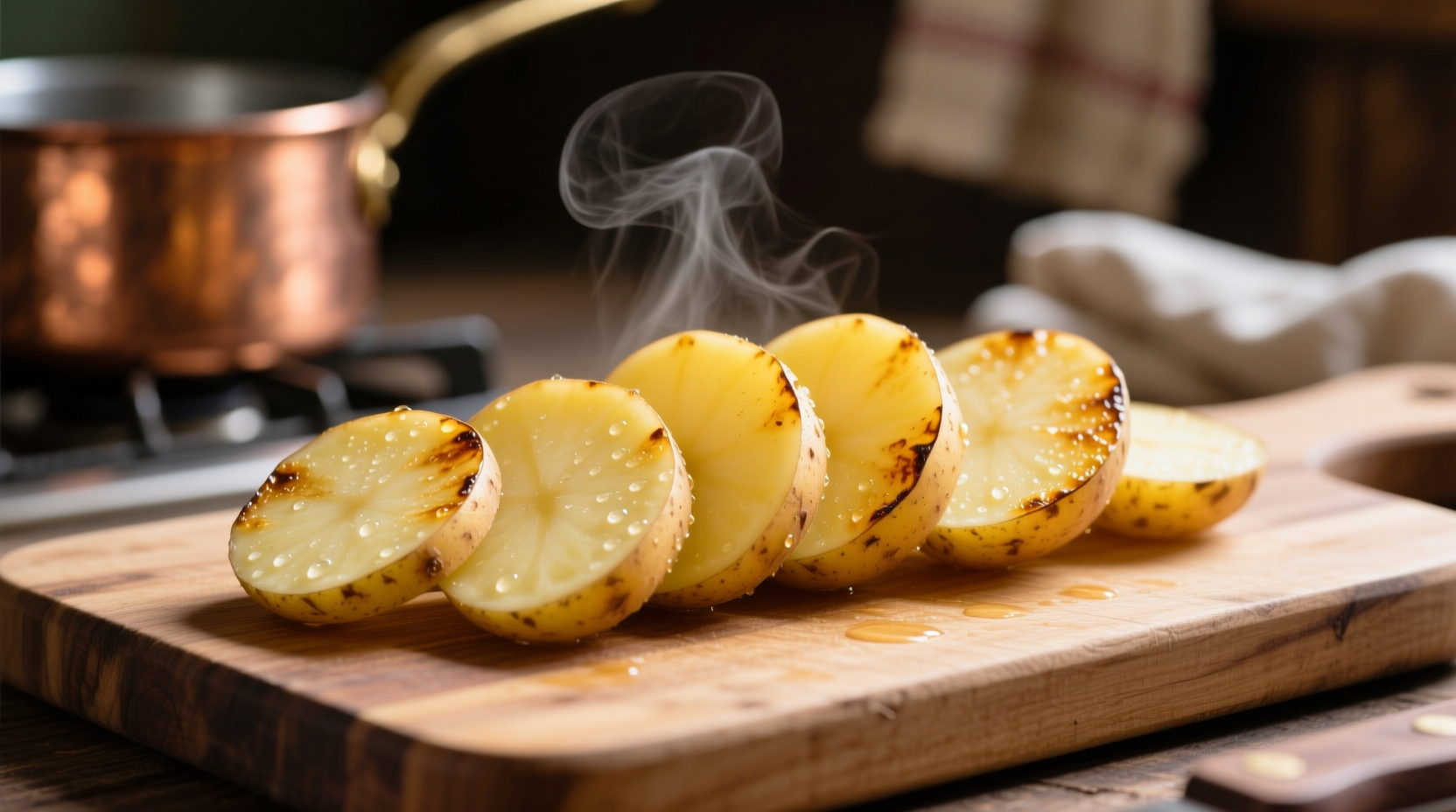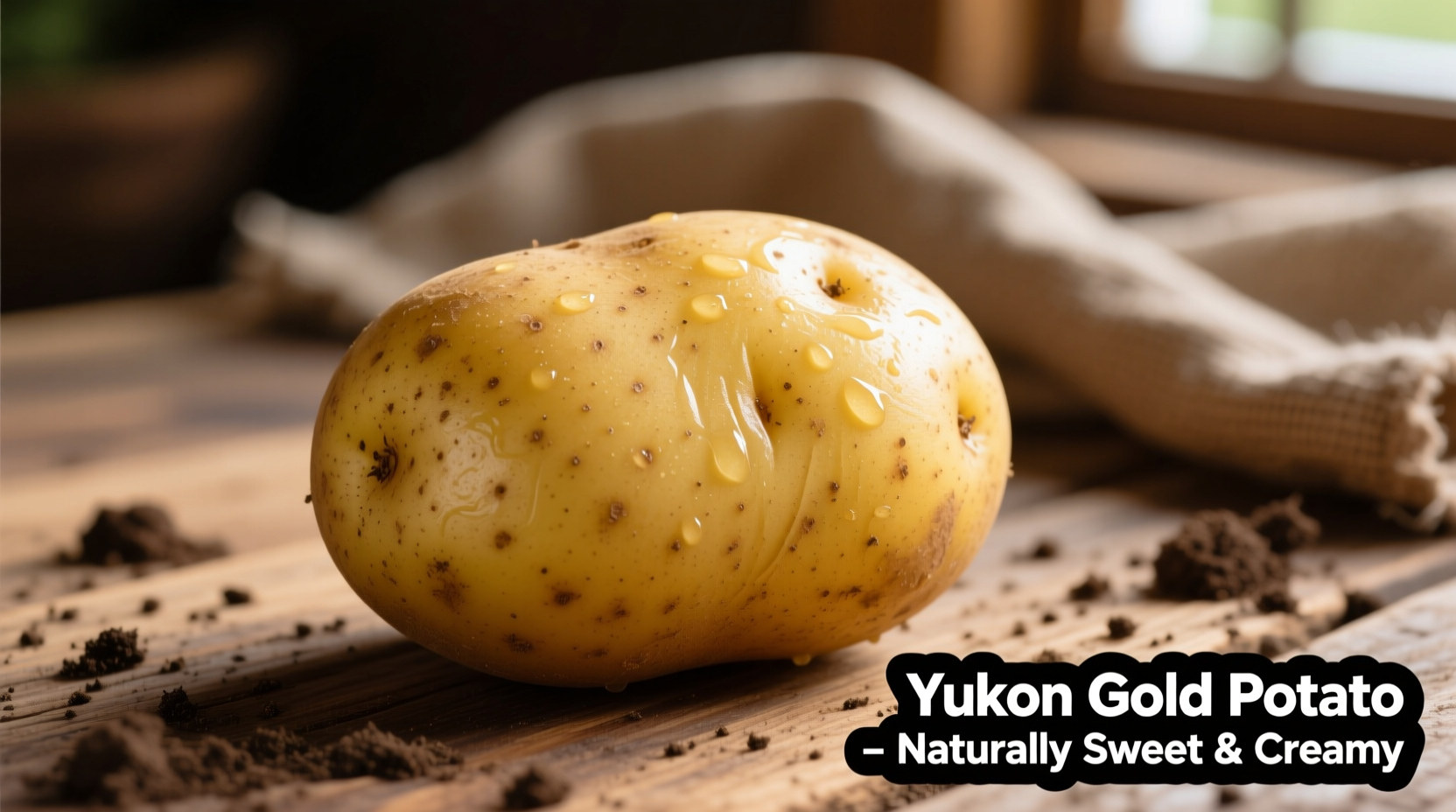What Makes Yukon Potatoes Special
Yukon Gold potatoes represent a culinary breakthrough developed through careful cross-breeding at the University of Guelph in Ontario, Canada. Unlike standard white potatoes, Yukon Golds feature distinctive golden-yellow flesh that provides both visual appeal and enhanced flavor profile. Their thin, smooth skin contains valuable nutrients, making peeling optional for most preparations. The unique buttery taste comes from naturally occurring compounds that eliminate the need for excessive added fats in many recipes.
| Potato Variety | Texture When Cooked | Best Cooking Methods | Storage Duration |
|---|---|---|---|
| Yukon Gold | Creamy yet firm | Mashing, roasting, soups | 2-3 weeks |
| Russet | Fluffy | Baking, frying | 2-3 months |
| Red Bliss | Firm | Boiling, salads | 3-4 weeks |
Yukon Potato Historical Development Timeline
Understanding the origin of Yukon Gold potatoes reveals why they've become kitchen staples. Canadian researchers began developing this variety in the 1950s through selective cross-breeding of yellow-fleshed heirloom potatoes with smooth-textured commercial varieties. The University of Guelph officially released Yukon Gold in 1980 after extensive field testing confirmed its superior culinary properties. By the mid-1990s, Yukon Gold had become North America's fastest-growing potato variety according to USDA agricultural reports, appreciated by both professional chefs and home cooks for its consistent performance.
Optimal Cooking Applications
Yukon Gold potatoes excel in specific culinary applications where their natural buttery flavor shines. For perfect mashed potatoes, boil Yukon Golds until fork-tender then mash with warm milk and a small amount of butter—you'll need 30% less fat than with russets while achieving superior creaminess. When roasting, cut Yukon Golds into 1.5-inch chunks and toss with olive oil, rosemary, and garlic for caramelized edges with fluffy centers. Their moderate starch content makes them ideal for soups and stews where they maintain shape better than russets but provide more body than waxy varieties.
Professional chefs avoid common mistakes with Yukon Golds by following these guidelines:
- Never refrigerate before cooking (causes sugar conversion)
- Use within 3 weeks for optimal flavor and texture
- Keep unpeeled when possible to preserve nutrients
- Avoid high-heat frying (skin may separate)

Nutritional Advantages Verified by USDA Data
According to USDA FoodData Central, a medium Yukon Gold potato (150g) provides 110 calories, 26g carbohydrates, and 3g protein. Most notably, Yukon Golds contain 738mg potassium—20% more than russet potatoes—which supports healthy blood pressure regulation. The golden flesh indicates higher carotenoid content than white potatoes, providing antioxidant benefits. When prepared without excessive fats, Yukon Golds deliver more vitamin C per serving than oranges by weight. The skin contains valuable fiber, so leaving it on increases dietary fiber content by 40% compared to peeled potatoes.
Selection and Storage Best Practices
Choose Yukon Gold potatoes with firm, smooth skin free from green spots, sprouts, or significant blemishes. Medium-sized potatoes (2-3 inches in diameter) typically offer the best balance of flavor and texture. Store in a cool, dark place with good ventilation—never in plastic bags which trap moisture. Ideal storage temperature ranges between 45-50°F (7-10°C). Avoid storing near onions, as ethylene gas from onions accelerates potato sprouting. For extended storage beyond three weeks, transfer to refrigerator but allow potatoes to return to room temperature before cooking to prevent uneven texture.
Practical Recipe Applications
Transform Yukon Gold potatoes into restaurant-quality dishes with these professional techniques. For silky mashed potatoes, steam rather than boil to prevent water absorption. Create exceptional roasted potatoes by parboiling for 5 minutes before roasting at 425°F (220°C) for crispy exteriors. Make perfect potato salad by cooling cooked Yukon Golds completely before mixing with dressing—their firm texture holds up better than waxy varieties. When preparing gratin, slice Yukon Golds paper-thin and layer with warm cream to ensure even cooking without becoming mushy.
Frequently Asked Questions
Can I substitute Yukon Gold potatoes for russets in recipes?
Yes, but with adjustments. Yukon Golds work well in most russet applications except for baked potatoes. For mashed potatoes, use 25% less liquid with Yukon Golds. In soups, add Yukon Golds later in cooking since they soften faster than russets.
Why are Yukon potatoes naturally yellow?
The golden color comes from naturally occurring carotenoids, specifically lutein and zeaxanthin. These pigments develop during growth and indicate higher antioxidant content compared to white-fleshed potatoes. The intensity varies based on growing conditions but doesn't affect flavor significantly.
How long do Yukon Gold potatoes last in storage?
Properly stored Yukon Golds maintain quality for 2-3 weeks in a cool, dark pantry. Refrigeration extends life to 4-6 weeks but may cause texture changes. Never store below 40°F (4°C) as cold temperatures convert starches to sugars, creating unpleasant sweetness when cooked.
Are Yukon Gold potatoes considered waxy or starchy?
Yukon Golds fall in the middle category—neither truly waxy nor starchy. They have moderate starch content (15-18%) which provides the perfect balance for multiple cooking methods. This intermediate classification explains their versatility across various culinary applications where other potatoes might fail.











 浙公网安备
33010002000092号
浙公网安备
33010002000092号 浙B2-20120091-4
浙B2-20120091-4